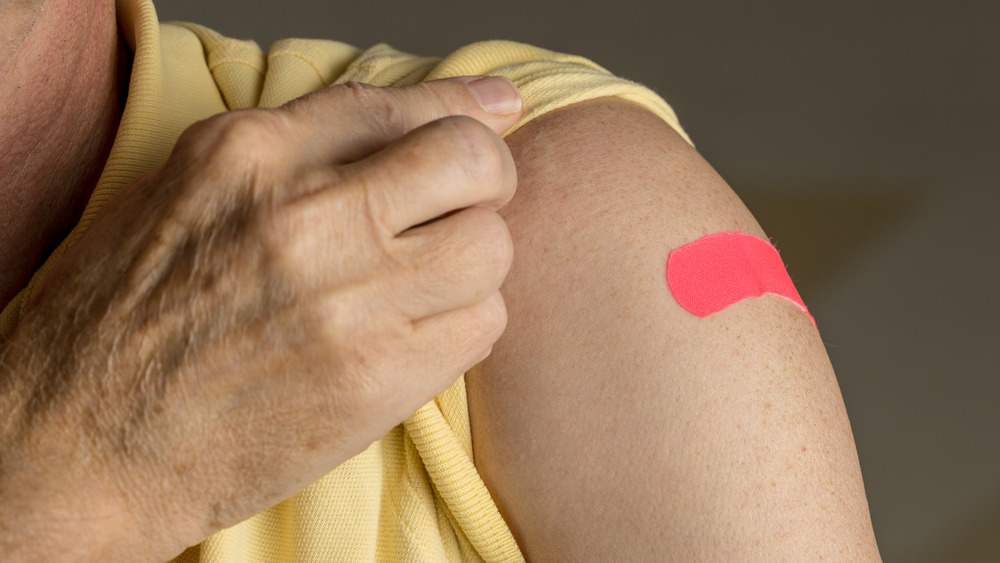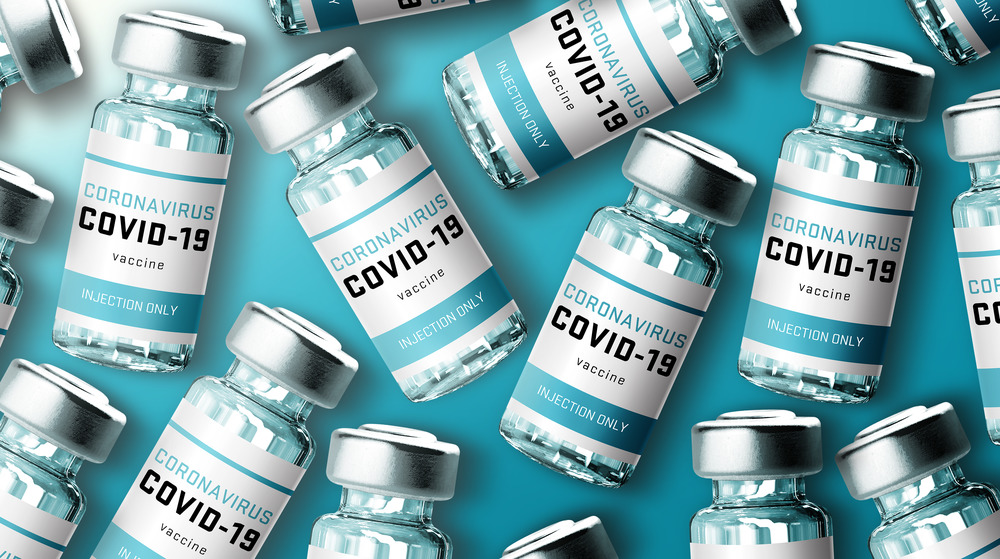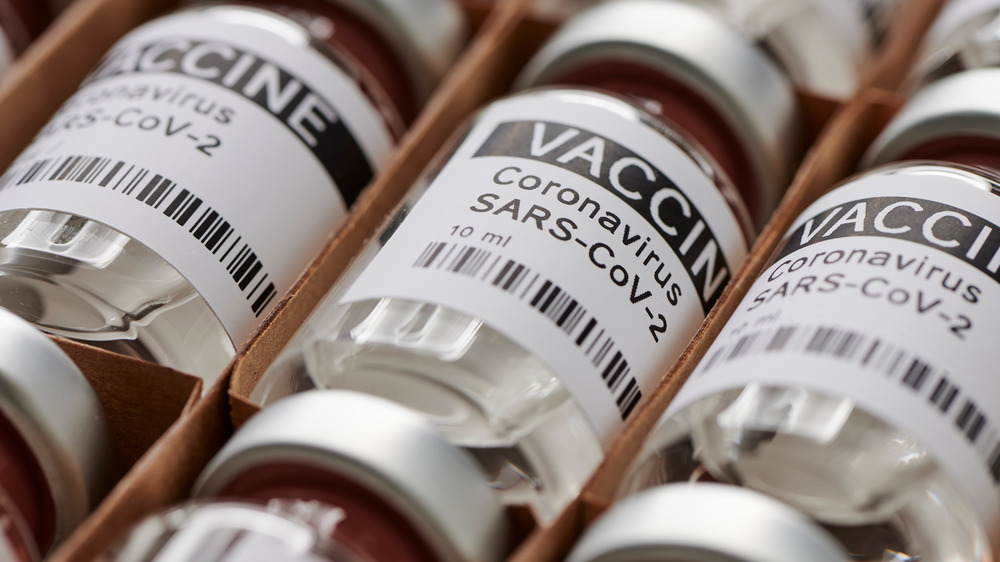The Surprising Reason Some People Are Saying No To The COVID-19 Vaccine
For the majority of 2020, everyone was waiting for the prince to come riding in on his white horse to save us all from a truly unpredictable and chaotic year of events. The prince, of course, was a vaccine against COVID-19, and the white horse was the scientific and medical community. Late last year that prince did arrive in the form of the Pfizer and Moderna COVID-19 vaccines. Recently, a third vaccine was approved for emergency use, the Johnson and Johnson single-dose vaccine.
Currently, over 91 million vaccines have been administered in the United States, with nearly 10 percent of the total population being fully vaccinated (via CDC). While those numbers are promising, there are some obstacles standing in the way of even more people receiving their vaccine. Aside from the spread of misinformation, trypanophobia, or extreme fear of needles or injections, is a big obstacle for many to overcome (via Very Well Mind).
It would seem that in an attempt to ease concerns and perhaps desensitize the masses to the "jab," the media heavily uses images of vaccines being drawn up and administered. It may, however, have the opposite effect, and discourage people more. While many don't flinch, for those with a fear of needles, the never-ending slew of images on the news and online can trigger real fear and panic.
Ways to overcome your fear of needles
So what are some ways to help overcome this barrier and get as many people vaccinated as possible?
With vaccine availability still months away for the general public, cognitive behavioral therapy (CBT) may help those with trypanophobia overcome their fears. Through an array of techniques, such as desensitization and exposure therapy, a licensed professional can help rework the fear relationship with needles.
If you're not looking to invest in CBT, simple avoidance may help. While some people enjoying watching the entire process, it is recommended to avoid looking at the actual needle if it makes your heart race and your brow sweat. Looking away and temporarily focusing on something else can help keep those uncomfortable sensations at bay.
Arm yourself with information, not Tylenol
Another tip is to be informed with facts, not misinformation. For some, anticipation of the needle stick causes more pain than the injection itself. Vice President Kamala Harris said she "barely felt it" (via NPR). In fact, the COVID vaccine should feel just like any other intramuscular vaccine you've received in the past, but it may actually be felt less. Dr. Abinash Virk, co-chair of the COVID vaccination allocation and distribution for the Mayo Clinic, told NPR that the CDC has issued guidance for acceptable needle sizes and vaccinators may be opting for the smallest sizes within the guidelines. It is of note that the diameter of the typical needles used is narrower than the tip of a pencil point, which is quite small.
One thing which is not recommended, however, is preemptively taking a pain reliever like Tylenol. While it is okay to take Tylenol if you develop any side effects after your vaccinations, studies have found taking it ahead of the vaccine in hopes of decreasing pain and side effects can actually blunt your immune response and render the immunization less effective against COVID-19.



